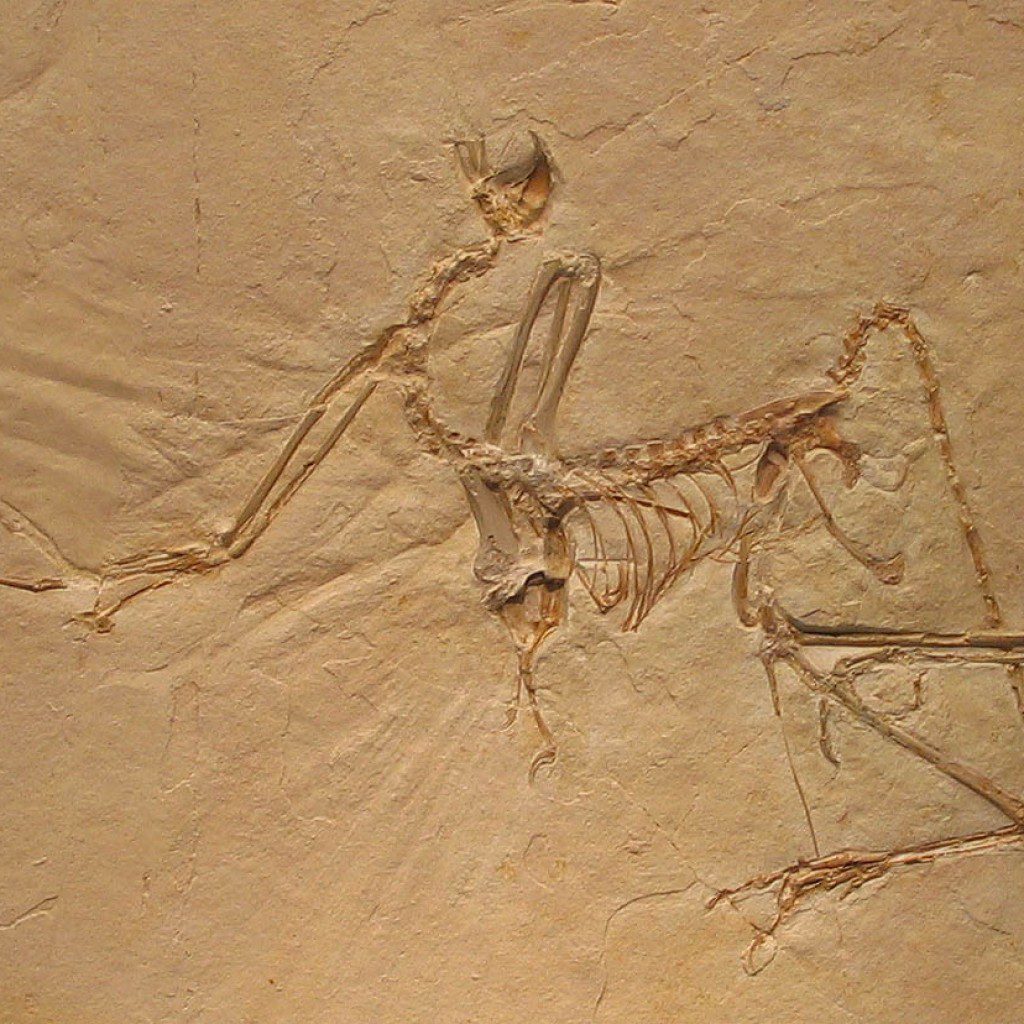
Birds, with their feathers and toothless bills, bipedal locomotion and flight form such a distinct class, it is hard to imagine that they derived from any other group of animals. But Archeopteryx provides an excellent example of an intermediate evolutionary form among the vertebrates. The fossil record of birds is slim, though, because they are so lightweight that they tend to float and decompose or be eaten by scavengers before they become entrapped in sediments.
About 150 million years ago a feathered creature the size of a crow died and was trapped in sediments. Archeopteryx lithographica is considered to be a missing link between reptiles and birds because it has characteristics of both groups. Archeopteryx had a shoulder girdle, pelvic girdle, and legs similar in shape to modern birds. Its feathers were exactly like those of modern birds except in arrangement; it had paired clavicles to form a furcula (wishbone), a distinctly avian feature; and a foot with three digits forward and one back.
Distinctly reptilian features include: small teeth in jaw sockets; a long tail of 20 vertebrae; six fused vertebrae (vs 11 in birds); free toe bones with claws on all digits; simple ribs with no lateral extensions; abdominal ribs. The bones of the wing and leg were relatively short and stout. Although it had a sternum (breasstbone), there was no keel where flight muscles attach. Thus it was a weak flier or a glider. It weighed about 2000 grams, was probably predatory, and may have been homeothermic.
Is Archeopteryx the ancestor of all modern birds? Most likely, it is on a sideline of bird evolution although closely related to the mainstream of evolution. The Pterosaurs and pterodactyls were once considered ancestors of birds, and there are certain similarities such as pneumatic bones, but the pterosaurs had a wing membrane like bats and no feathers. Birds evolved from a group of small bipedal dinosaurs.
Evolution of Flight
We find a number of animals that are gliders or fliers. Several kinds of reptiles and amphibians developed the ability to fly with horizontal ribs stretched into sails, or with a membrane between the ribs and hand. The Malay frog flattens its body and stretches its limbs to glide. Even one tropical snake parachutes by flattening its body. Also flying squirrels, bats, phalanger (primate), fish, etc. Almost all of these vertebrate forms evolved from an arboreal ancestor (except for flying fish and pterosaurs that jumped off cliffs.)
So it is likely that early reptiles in the bird-to-be stock climbed trees and jumped from them with elongated scales being used to lengthen the glide, scales having evolved a lengthened shape perhaps for protection or insulation as Archeopteryx was probably partially homeothermic. Selection for longer glides would have selected for longer scales/feathers. Archeopteryx probably climbed trees with its claws
Evolution of Homeothermy
Living reptiles are poikilothermic (“cold-blooded”) and so extinct reptiles have been regarded likewise. But both mammals and birds are homeothermic (“warm blooded”), so the transition must have occurred in the later reptiles.
Geologic History
Archeopteryx appeared 140-160 million years ago in the Jurassic Period of the Mesozoic Era.
About 100 million years ago, birds had evolved into essentially modern-looking forms. Birds probably evolved a carina for flight and flightless birds lost them later.
Roughly 1700 species of birds have been identified by fossil remains. Of this number, about 800 are extant and 900 extinct. So we have been able to identify about 11,000 species, which is perhaps only about 6% of all species that have ever existed- we just don’t have fossil evidence for the rest.The latest estimate of the total number of bird species that have ever lived is 166,000.
More on evolution from PBS.
Bird Evolution- Wikipedia.
Flights of Fancy in Avian Evolution
This is so cool I can’t believe all this information is true
I know
My class hates me for loving birds
My class hates me for loving birds
I know
My name is lailah olivia sanidine I am 16